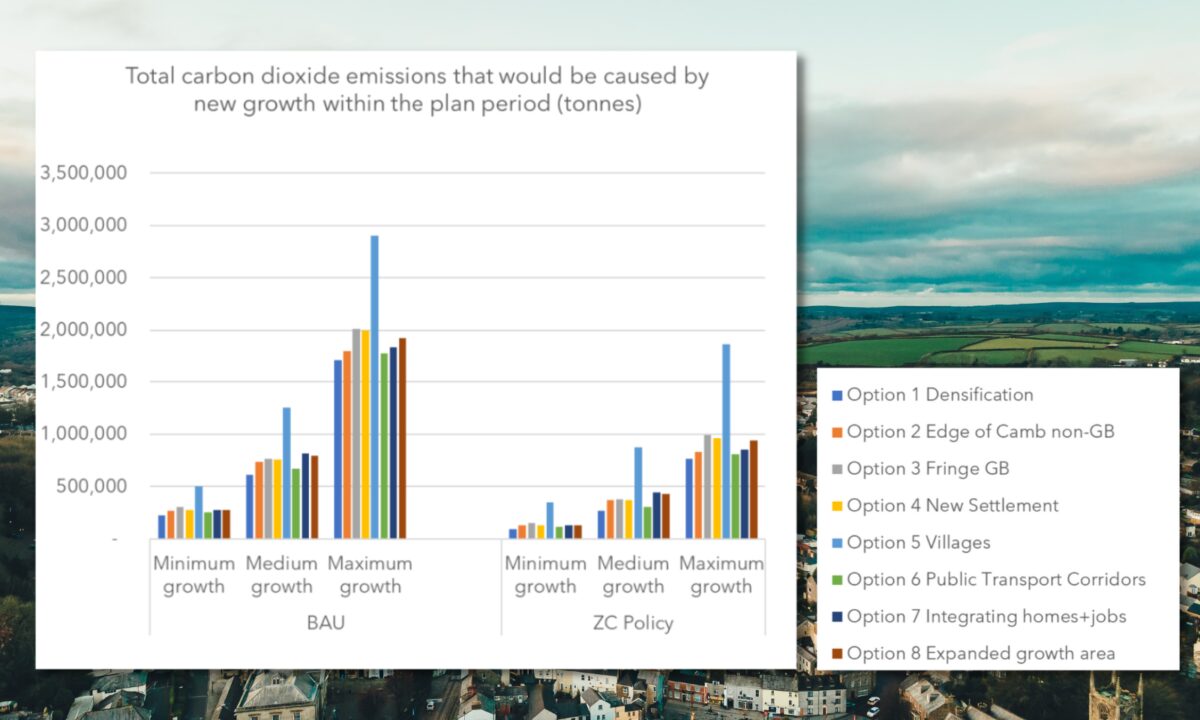NPPF consultation 2024 – what's new?
The UK government's proposed reforms to the National Planning Policy Framework (NPPF) for 2024 reflect a complex balancing act between addressing housing needs, promoting economic growth, and preserving the environment, particularly through what will likely be controversial changes to Green Belt policies. However, as housing targets increase and pressure on Local Planning Authorities (LPAs) to release land intensifies, one thing is clear: the need for net-zero homes is more crucial than ever.
The consultation’s push for higher housing targets and the restoration of the five-year housing land supply requirement signals the government’s clear commitment to boosting housing delivery (in line with its manifesto to build 1.5 million homes). But without a clear mandate for net-zero standards, these efforts could come at a significant environmental cost. The introduction of the "Grey Belt" concept and changes to Green Belt policies, which make it easier to develop on previously protected land, further heighten the urgency to ensure all new homes are built to net-zero specifications. The Future Homes Standard, due to be introduced in 2025, will support this.
However, the previous government’s consultation proposals were not sufficient to get us to net zero, as our own modelling tool has shown. This led us to start a campaign in Spring 2024, supported by 250 organisations, where we drew out positive proposals for the government to improve the FHS. The new government needs to introduce the FHS as soon as possible.
But building standards alone are not enough. As LPAs are pressured to meet these increased targets, particularly in areas like the home counties and urban fringes, sustainable development must be non-negotiable, both in terms of the standard of housing, but also the spatial implications of this growth (no more dormitory towns or car-dependent developments) – something that our Innovate UK-backed spatial carbon modelling tool has made clearer for LPAs, providing evidence to support their local plan policies. Every new home must contribute to the UK’s legally mandated net-zero goals, aligning with the broader need for climate resilience.
Simply approving homes without regard for their location, will undoubtedly lock in more unnecessary emissions related to transport choices - emissions we cannot afford to create.

So, let's get to it. Here’s our initial take on 5 key areas from the proposed changes to the NPPF:

Labour’s election manifesto promised to "reform and strengthen" the presumption in favour of sustainable development, which had already been a cornerstone of planning policy for some time. While the language of the consultation version of the NPPF maintains the "tilted balance" approach, the updates offer clearer guidelines on when this presumption applies. This includes an emphasis on the location and design of developments, as well as considerations for affordable housing. However, the absence of explicit guidance on the weight of these factors will very likely leave room for continued disputes in planning decisions, particularly in subjective areas such as the impact on key landscapes.

A key proposed change is the bolstering of obligations for cross-boundary cooperation in plan-making. The revised text underlines the importance of addressing strategic issues such as housing needs, infrastructure, and climate resilience through collaborative efforts between local planning authorities. The new requirements push LPAs and Planning Inspectors to make informed decisions based on available data, rather than deferring difficult decisions. This proactive stance aims to prevent LPAs from neglecting their responsibilities, particularly in addressing unmet housing needs – something of particular importance to rural areas surrounding cities that have limited growth options – eg Oxford.

The proposed changes to housing needs assessments and the restoration of the five-year housing land supply (5YHLS) requirement highlight the government's intention to ensure LPAs remain responsive to housing delivery challenges. By reversing recent relaxations from the previous administration, such as the reduced four-year housing land supply for certain plans, the government is signalling a return to stricter oversight. This move, coupled with the introduction of a new standard method for calculating housing needs, reflects the government's commitment to boosting housing delivery, though the political will to enforce these standards will be tested.
Most notably, the consultation looks to restore the requirements for LPAs to demonstrate a five-year housing land supply (5YHLS), even when the adopted plan is less than five years old. This reflects the need for LPAs to adapt and respond to changes in delivery (or lack of) after the adoption of a plan, to ensure that the LPA continues to meet its housing need. This will be a core policy tool in Labour’s efforts to boost delivery towards 1.5 million homes over the course of this parliament. This restoration of the five-year land supply obligations becomes potentially very powerful, alongside the proposals for ‘Grey Belt’ development.

One of the more "controversial" aspects of consultation is the introduction of the "Grey Belt" concept and the significant changes to the Green Belt policy. The Grey Belt is defined as land that makes a "limited contribution" to Green Belt purposes. (In previous media coverage of Labour’s Grey Belt policy in April, it was described as: "being broader than brownfield, covering areas without permanent structures such as car parks" and some green spaces with "little intrinsic beauty or character". However, the definition has evolved and the consultation definition describes the Grey Belt as covering areas of Previously Developed Land (PDL) and/or land that makes a "limited contribution" to the Green Belt purposes.)
This policy shift, which allows for the development of Grey Belt land without needing to demonstrate "very special circumstances", could potentially open significant areas for development, particularly in urban fringe areas (notably around Oxford and London). However, Labour is looking to offset concerns over urban sprawl by the introduction of stringent "Golden Rules," such as the requirement for 50% affordable housing on Green Belt-released land. This then opens up further questions regarding the viability of such developments.
The proposed changes also mandate that LPAs review Green Belt boundaries to meet housing needs, a significant departure from previous policies that only implied this requirement. This new directive is likely to lead to contentious local plan examinations, especially in areas where Green Belt land plays a critical role in maintaining local character and preventing urban sprawl.
Key points:
- LPAs must now review Green Belt boundaries if they cannot meet housing or commercial needs.
- The concept of "Grey Belt" is introduced, allowing for development on certain previously developed Green Belt land without demonstrating "very special circumstances."
- Development on Green Belt land will prioritise previously developed land, followed by Grey Belt land, and only then other Green Belt areas.
- Higher housing targets will increase pressure on LPAs to release Green Belt land to meet demand.

The transition arrangements outlined in the consultation add a layer of complexity to Local Plan development and plan-making - particularly for LPAs that are currently mid-process. The decision tree for applying the new framework is intricate, and the thresholds set for revising local plans may lead to legal challenges. The requirement for LPAs to immediately begin new plans if their current housing targets fall significantly below updated needs could create additional pressure, particularly in regions already struggling to meet housing demands.
In this critical moment, we must advocate for stronger, clearer policies within the NPPF that make net-zero carbon homes the standard across the UK.
To conclude
While it’s positive that the government is aiming to increase the volume of houses needed to help address the affordability crisis, and prioritising brownfield and "grey belt" locations, at Bioregional, our strong view is that meeting housing demands should not come at the expense of our natural ecosystems. Instead, we must ensure that every new home is a step towards a sustainable, resilient future. Crucially, development and communities must be strategically located close to public transport and walkable and cyclable distances to key facilities. Simply approving homes without regard for their location, will undoubtedly lock in more unnecessary emissions related to transport choices - emissions we cannot afford to create.
In this critical moment, we must advocate for stronger, clearer policies within the NPPF that make net-zero carbon homes the standard across the UK, as well as spatial carbon assessments of growth areas to ensure we meet our carbon budgets and overarching net zero goal.
Looking for support?
Learn more about our consultancy support for local authorities, and our Innovate UK-backed spatial planning tool.









